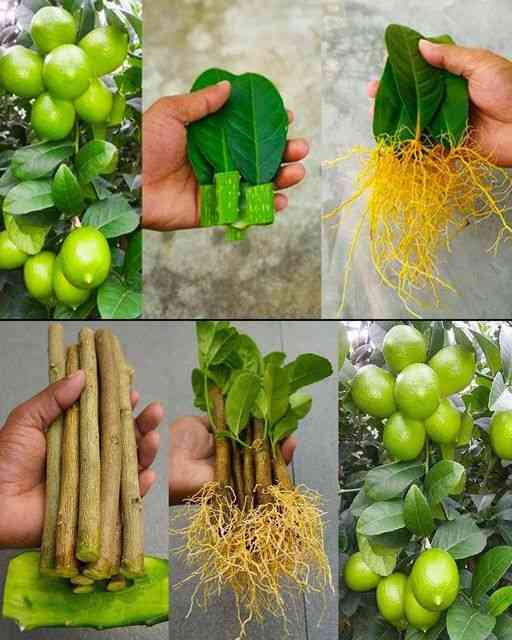If you’ve ever wanted to propagate a lemon tree, you’re in luck! In this guide, we’ll walk you through a straightforward and efficient method for propagating lemon trees from cuttings, and it involves an unlikely ally: aloe vera. Aloe vera’s natural properties act as a rooting hormone, fostering strong root development in your lemon cuttings. Follow along for a step-by-step tutorial on how to propagate a lemon tree from cuttings using aloe vera.
Materials You Will Need:
- Healthy lemon tree cuttings
- Fresh aloe vera leaves
- A pot filled with sand
- A 5-liter plastic bottle
- Water
- Sharp knife or scissors
- A small shovel or digging tool
Step 1: Gather Your Cuttings
Your journey starts with securing cuttings from a healthy lemon tree. Opt for branches that are free from any ailments or pests and are approximately 6-8 inches in length. Use a sharp knife or scissors to ensure clean cuts, ideally at a 45-degree angle.
Step 2: Prep the Aloe Vera
Aloe vera is our secret ingredient here. It contains natural rooting hormones that stimulate root growth. Carefully slice open an aloe vera leaf lengthwise to reveal the gel inside. This gel will be a crucial player in helping your lemon cuttings develop roots.
Step 3: Apply Aloe Vera Gel
Gently apply the aloe vera gel to the lower portion of your lemon cuttings. This gel acts as a natural rooting hormone and doubles as a protective barrier against potential infections. Make sure to coat your cuttings thoroughly for maximum effect.
Step 4: Allow the Gel to Set
Let your aloe vera gel-coated cuttings rest for a few hours. This brief waiting period allows the gel to dry and form a protective shield around your cuttings.
Step 5: Plant Your Cuttings in Sand
Fill a pot with clean sand and create holes in it using a small shovel or digging tool. Plant your prepared lemon cuttings in the holes, ensuring that they are securely nestled in the sand.
Step 6: Hydrate Your Cuttings
Water your cuttings generously. It’s important to keep the sand moist but not waterlogged, as adequate moisture is vital for successful root development.
Step 7: Craft a Mini Greenhouse
To create an optimal environment for your lemon cuttings to root, cut the top half of a 5-liter plastic bottle. Position this cut bottle over your pot to create a miniature greenhouse effect. This setup helps maintain humidity levels around your cuttings.
Step 8: Keep a Close Eye on Progress
Regularly check the moisture level within your pot and ensure a consistently moist environment. You can crack open the bottle slightly to allow some airflow, but exercise caution to prevent your cuttings from drying out. Condensation forming inside the bottle is a promising sign that the humidity is at the right level.
Step 9: Witness Root Development
After several weeks to a few months, you should begin to see signs of root development on your lemon cuttings. Once the roots are well-established, and your cuttings have grown into robust young plants, you can transplant them into larger pots or directly into your garden.
The process of propagating a lemon tree with aloe vera is not only accessible but also budget-friendly. The natural rooting properties of aloe vera, coupled with the mini greenhouse setup, provide an ideal environment for successful propagation. While this method may require some patience, the satisfaction of growing your lemon tree from scratch is truly rewarding. Happy gardening.


